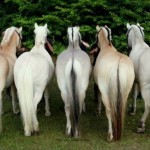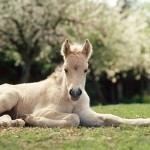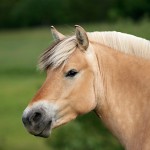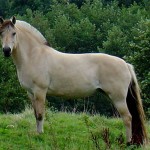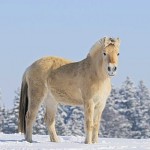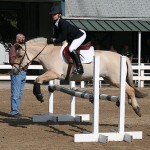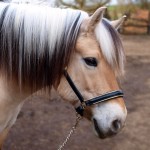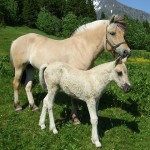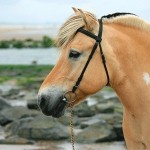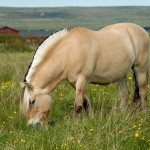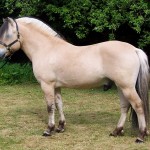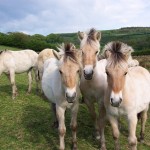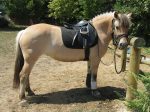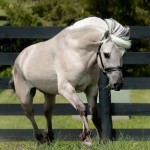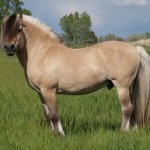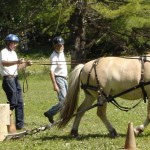Fjord Horse
The Fjord Horse is an extremely popular breed of Norwegian horses that developed in the hoary past. This equine is a blend of the muscling and bone of the draft (draught) horses, yet they come in a relatively smaller size. However, despite their size, they are horses of great agility and are quite capable of pulling heavy burdens and carry an adult human. As pets, they have the reputation for having a generally good temperament.
Fjord Horse Pictures
- Fjord Horse Colours
- Fjord Horse Foal
- Fjord Horse Head
- Fjord Horse Images
- Fjord Horse in Snow
- Fjord Horse Jumping
- Fjord Horse Mane
- Fjord Horse Mare and Foal
- Fjord Horse Pictures
- Fjord Horse Wallpaper
- Fjord Horse
- Fjord Horses
- Fjords Horse
- Norwegian Fjord Horse
- Norwegian Fjord Horses
- Fjord Horse Logging
Quick Information
| Pronunciation | fiord – /ˈfiːɔː(r)d/ |
| Temperamental Characteristics | Gentle personality; curious, playful, quiet, quick, agile, obedient, tenacious, gentle, loyal, active |
| Physical Descriptions | Distinct appearance; compact, muscular body; strong, arched neck; sturdy legs and proportionate feet; well defined, medium sized head with flat and broad forehead and straight or somewhat dished face; ears are small; large dark eyes; hair coat becomes particularly thick and heavy in the winter; mane is heavy, long and thick; presence of some feathering on the lower legs |
| Colors | All Fjord horses are dun in color, with five variations in shade that have been recognized in their breed standard – brunblakk (or, brown dun), rødblakk (or, red dun), grå (or, gray), ulsblakk (or, white dun/uls dun), and gulblakk (or, yellow dun) |
| Common Uses | Dressage, endurance riding, rodeo, general riding, jumping, work activities |
| Lifespan/Expectancy | 30 years (average) |
| Weight | 1045 pounds |
| Height (size) | 15 hands |
| Health Problems | Prone to four known breed-specific health issues: colic, laminitis, rain rot, and thrush |
| Gaited | Yes |
| Blood Horse Type | Warm-blooded |
| Popular Traits | Able to accommodate the various needs of horse owners, endurance capabilities, well-balanced gait, good trainability, easy to care, can be used both as a harness horse and under saddle. |
| Movement | Straight and true, with good forward galloping |
| Feeding/Diet | General horse diet consisting of grass, vegetables, etc. |
| Country of Origin | Norway |
| Year/Time of Development | Ancestral origin 4000 years back, selectively bred since 2000 years |
| Breed Information | Conformation/Standards Pedigree |
Video: How the Fjord Horse differs from other breeds
History and Origin
It is believed that, about 4000 years ago, the ancestors of the Fjord Horse had migrated to Norway, where they were domesticated to serve different purposes. These horses were selectively bred since 2000 years which is evident from the different archaeological excavations that were carried out at the different Viking burial sites.
It is most likely that their ancestors came to Norway from the east. Historically, these Norwegian horses had appeared in various shapes or body types, as per the different requirements of the times. It is from this vivid genetic pool that the present-day versatile Fjord horse has evolved.
In the west of Norway, these horses and their ancestors have been used for farm work since many centuries. This active and energetic breed had also been utilized during World War II since they proved to be very useful while working in the mountainous terrain. These horses still display strong survival instincts and remain healthy and useful all through its long span of life.
Other sources suggest that, the Fjord Horse has a long recorded history of pure breeding without crossing them with any other horses. It is among the oldest breeds in the world. Experts have described the Fjord as one of the purest of the horse breeds. About their breeding plan for the Fjord Horses, even the Norwegian breed registry has mentioned: “Norges Fjordhestlag aims through its pure breeding program to preserve the characteristics and versatility of the breed… The Fjordhorse shall possess the character (i.e. Breed type) which is typical for the breed.”
In recent years, the municipalities of Gloppen and Eid, both in Nordfjord, have sported the Fjord horse as a charge in their coat of arms.
Interesting Facts
- Because the breeding of these equines took place mostly in the western part of Norway, this breed came to be known as “Vestlandshesten”, which means, ‘the horse of the western country’.
- At times, these horses can have one or more dark stripes over their withers, however, that is very rare.
- It is not permitted to crossbreed the Fjord, and doing so will result in revocation of breeding privileges.
- The Fjord horse is one of Norway’s three native breeds.
- In the tourist industry, this equine is used as a symbol of Norwegian traditional.
- Strictly carrying the pure bloodline, the modern day Fjord horse closely resembles the horses that the Vikings used.
- Though a few specimens of these horses might fall under the traditional cutoff between ponies and horses, the Fjord horse is considered a horse, irrespective of its size.
- The red dun fjords can have white
- In modern Norway and the Scandinavian countries, the Fjord is used in therapy for disabled people, as also in riding schools for children.
- The Fjord is one horse that suits riders of all skill levels.
- Many fjord owners cut their manes into a very special upright style, resembling a crescent shape that stands between 2 and 4 inches. This style, practiced since the time of the Vikings, also flaunts the dark dorsal line running through the centre of the mane.
- The Fjord horses can often be found in Olympic sporting events like Dressage.


